July 15th Scots Book of Days
July 15 circa 862 Swithun Bishop of Winchester feast day.
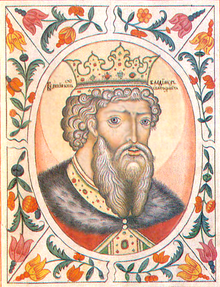 1015 Vladimir Sviatoslavich the Great died (Russian: Влади́мир, Vladimir] c. 958 – 15 July 1015, Berestovo) was a grand prince of Kiev, ruler of Kievan Rus’ in (980–1015). Vladimir converted from Pagan to Christian in 988, and adopted Christianity in Kiev and Black Sea. Edward Gibbon wrote (circa 1785) in the Decline and Fall of the Roman Empire: “but as the two brothers of Wolodomir had died without baptism, their bones were taken from the grave and sanctified by an irregular and posthumous sacrament.” (Collier edition, New York, 1901, volume V, Chapter LV, page 545,lines 16 to 18. 6 volumes.) Unfortunately abridged editions of Gibbon’s Rome leave chapter 55 out (to wit Harcourt Brace New York D.M. Low editor 1960; and Washington Square Press D.M. Lowes edition of 1962; and Penguin Classic Dero Saunders Editor Viking Press 1952 and 1980 (Saunders does not specify chapters); Circa 2010, a spokesman for the patriarchal parish of the Russian Orthodox church complained about the Church of Jesus Christ gathering or “buying” Russian Orthodox names for temple work. This was not new, as Wolodomir (Vladimir the great) ordered it a millennium before.
1015 Vladimir Sviatoslavich the Great died (Russian: Влади́мир, Vladimir] c. 958 – 15 July 1015, Berestovo) was a grand prince of Kiev, ruler of Kievan Rus’ in (980–1015). Vladimir converted from Pagan to Christian in 988, and adopted Christianity in Kiev and Black Sea. Edward Gibbon wrote (circa 1785) in the Decline and Fall of the Roman Empire: “but as the two brothers of Wolodomir had died without baptism, their bones were taken from the grave and sanctified by an irregular and posthumous sacrament.” (Collier edition, New York, 1901, volume V, Chapter LV, page 545,lines 16 to 18. 6 volumes.) Unfortunately abridged editions of Gibbon’s Rome leave chapter 55 out (to wit Harcourt Brace New York D.M. Low editor 1960; and Washington Square Press D.M. Lowes edition of 1962; and Penguin Classic Dero Saunders Editor Viking Press 1952 and 1980 (Saunders does not specify chapters); Circa 2010, a spokesman for the patriarchal parish of the Russian Orthodox church complained about the Church of Jesus Christ gathering or “buying” Russian Orthodox names for temple work. This was not new, as Wolodomir (Vladimir the great) ordered it a millennium before.
Grand Prince of Kiev. (ancestor of Edward 3rd and Scots and English royal lines) Vladimir’s grand daughter Anne of the Kiev married Henry 1 (4 May 1008 – 4 August 1060) King of the Franks, House of Capet, and they had Philip 1 (1052-1108) , who had Louis VI (1081-1137) King, then Louis VII, then Philip 2nd, then Louis 8th all Kings of France, then 2nd great grand daughter Isabela married Edward 2nd who had Edward 3rd both Kings of England, whose great grand daughter Jane Beaufort, became Queen of Scots by marriage to James 1st Stewart, King of Scots. Vladimir is the ancestor of all royalty of England since Edward 3rd and of Scotland since Malcolm IV, and his brother William the Lion. Anne of Kiev (with Henry 1st of France) had Hugh 1 of Vermandois, had Elizabeth of Vermandois who married William de Warenne 2nd Earl of Surrey, had Ada de Warenne married Heny 3rd Earl of Northumbria (or Scotland) and Earl of Huntingdon, had William the Lion (1st of Scots; and then again James 1s Stewart.
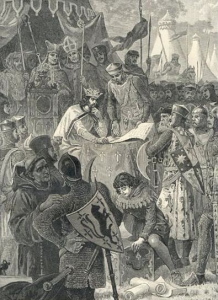 1215 Magna Carta formal document to record the agreement was created by the royal chancery on 15 July: this was the original Magna Carta, though it was not known by that name at the time. An unknown number of copies of it were sent out to officials, such as royal sheriffs and bishops. The 1297 version, with the long title (originally in Latin) The Great Charter of the Liberties of England, and of the Liberties of the Forest, still remains on the statute books of England and Wales. King John became the ancestor of Scots royalty from James 2nd Stewart King of Scots.
1215 Magna Carta formal document to record the agreement was created by the royal chancery on 15 July: this was the original Magna Carta, though it was not known by that name at the time. An unknown number of copies of it were sent out to officials, such as royal sheriffs and bishops. The 1297 version, with the long title (originally in Latin) The Great Charter of the Liberties of England, and of the Liberties of the Forest, still remains on the statute books of England and Wales. King John became the ancestor of Scots royalty from James 2nd Stewart King of Scots.
John of England signs Magna Carta. Illustration from Cassell’s History of England (1902).
 Surety Henry de Bohun, 1st Earl of Hereford, and Constable of England (1176 – 1 June 1220). was the son of Humphrey III de Bohun and Margaret of Huntingdon, daughter of Henry of Scotland, 3rd Earl of Huntingdon, a son of David I of Scotland.
Surety Henry de Bohun, 1st Earl of Hereford, and Constable of England (1176 – 1 June 1220). was the son of Humphrey III de Bohun and Margaret of Huntingdon, daughter of Henry of Scotland, 3rd Earl of Huntingdon, a son of David I of Scotland.
 Surety Richard de Clare, 3rd Earl of Hertford, 4th Earl of Gloucester jure uxoris (c. 1153–1217), was also present at the homage of King William of Scotland as English Earl of Huntingdon at Lincoln.
Surety Richard de Clare, 3rd Earl of Hertford, 4th Earl of Gloucester jure uxoris (c. 1153–1217), was also present at the homage of King William of Scotland as English Earl of Huntingdon at Lincoln.
Surety Saer de Quincy, 1st Earl of Winchester (1155 – 3 November 1219) (or Saieur di Quinci) father, Robert de Quincy, was a knight in the service of king William the Lion, and his 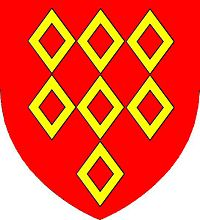 mother Orabilis was the heiress of the lordship of Leuchars in Fife. His wife Margaret de Beaumont, was sister to Fife neighbour, Roger de Beaumont, Bishop of St Andrews. Through his wife’s inheritance, he became Earl of Winchester. In Scotland, he was perhaps more successful. In 1211 to 1212, the Earl of Winchester commanded an imposing retinue of a hundred knights and a hundred serjeants in William the Lion’s campaign against the Mac William rebels, a force which some historians have suggested may have been the mercenary force from Brabant lent to the campaign by John. The first recorded Saer de Quincy (known to historians as “Saer I”) was lord of the manor of Long Buckby in Northamptonshire in the earlier twelfth century, and second husband of Matilda of St Liz, stepdaughter of King David I of Scotland by Maud of Northumbria. A son, Robert de Quincy seems to have inherited no English lands from his father, and pursued a knightly career in Scotland, where he is recorded from around 1160 as a close companion of his cousin, King William the Lion. By 1170 he had married Orabilis, heiress of the Scottish lordship of Leuchars and, through her, he became lord of an extensive complex of estates north of the border which included lands in Fife, Strathearn and Lothian. Saer’s daughter Lora who married Sir William de Valognes, Chamberlain of Scotland.
mother Orabilis was the heiress of the lordship of Leuchars in Fife. His wife Margaret de Beaumont, was sister to Fife neighbour, Roger de Beaumont, Bishop of St Andrews. Through his wife’s inheritance, he became Earl of Winchester. In Scotland, he was perhaps more successful. In 1211 to 1212, the Earl of Winchester commanded an imposing retinue of a hundred knights and a hundred serjeants in William the Lion’s campaign against the Mac William rebels, a force which some historians have suggested may have been the mercenary force from Brabant lent to the campaign by John. The first recorded Saer de Quincy (known to historians as “Saer I”) was lord of the manor of Long Buckby in Northamptonshire in the earlier twelfth century, and second husband of Matilda of St Liz, stepdaughter of King David I of Scotland by Maud of Northumbria. A son, Robert de Quincy seems to have inherited no English lands from his father, and pursued a knightly career in Scotland, where he is recorded from around 1160 as a close companion of his cousin, King William the Lion. By 1170 he had married Orabilis, heiress of the Scottish lordship of Leuchars and, through her, he became lord of an extensive complex of estates north of the border which included lands in Fife, Strathearn and Lothian. Saer’s daughter Lora who married Sir William de Valognes, Chamberlain of Scotland.
Surety Sir Robert de Ros, or de Roos of Helmsley, (ca. 1170/1172 – 1227), in Haddington, East Lothian, Scotland, Ros married Isabella Mac William widow of Robert III de Brus. Isabella was the natural daughter of William the Lion, King of Scots by the daughter of Richard Avenel.
Surety Eustace de Vesci (1169–1216) was an English lord of Alnwick Castle, and a Magna Carta surety. He was sent to William the Lion of Scotland to promise him satisfaction of his rights in England, and witnessed his homage on 22 November 1200. Accused of conspiring against John in 1212, he fled to Scotland. He was killed at a siege of Barnard Castle; while he accompanied Alexander II of Scotland on his way to do homage to Louis of France. He married Margaret, half-sister of Alexander II of Scotland, an illegitimate daughter of William the Lion by a daughter of Adam de Hythus. They had William de Vesci, who was father of John de Vescy and of William de Vescy. The latter was one of the Competitors for the Crown of Scotland in 1291.
1262 – Richard de Clare, 5th Earl of Hertford, 6th Earl of Gloucester English soldier (b. 1222). In August 1255 Richard and John Maunsel were sent to Edinburgh by the King Henry 3rd to find out the truth regarding reports which had reached the King that his son-in-law, Alexander, King of Scotland (age 14) was being coerced by Robert de Roos and John Baliol. If possible, they were to bring the young King Alexander and Queen to Henry. The Earl and his companion, pretending to be the two of Roos’s knights, obtained entry to Edinburgh Castle and gradually introduced their attendants, so that they had a force sufficient for their defense. They gained access to the Scottish Queen, who made her complaints to them that she and her husband had been kept apart. They threatened Roos with dire punishments, so that he promised to go to the King. Meanwhile the Scottish magnates, indignant at their castle of Edinburgh’s being in English hands, proposed to besiege it, but they desisted when they found they would be besieging their King Alexander 3rd and Queen Margaret Plantagenet. The King of Scotland apparently traveled South with the Earl, for on 24 September Alexander and Richard were with King Henry III at Newminster, Northumberland. In July 1258 Richard fell ill, being poisoned with his brother William, as it was supposed, by his steward, Walter de Scotenay. Earl Richard recovered but his brother died Earl of Gloucester.
1274 Bonaventure, Friar, Bishop, Teacher of the Faith.
 1299 Eirik II of Norway died. Erick’s second wife, queen Isabella Bruce was the daughter of Robert VI the Bruce, 6th Lord of Annandale, Earl of Carrick (1253–1304)
1299 Eirik II of Norway died. Erick’s second wife, queen Isabella Bruce was the daughter of Robert VI the Bruce, 6th Lord of Annandale, Earl of Carrick (1253–1304)
- Brus or Bruce 1050 2Stewart2Kennedy 2Montgomery2Blair 2Cochrane2Miller 2Simmons2Choate zoe ToaG Erik and isabella’s daughter Ingeborg Eriksdottir of Norway married Valdemar Magnusson of Sweden, Duke of Finland, in 1312. Isabel herself arranged for her daughter’s marriages. First wife was Margaret of Scotland September 1281 Bergen one daughter. Eric II Magnusson (Eirik II Magnusson) 1273–1299 with Magnus VI (1273–1280)
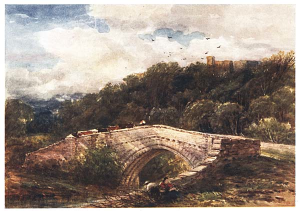 1513 The Scottish fleet sailed to France via Carrickfergus to aid Louis XII on 15 July 1513. Louis’ wife will send her scarf to James IV to beg aid. James 4th will invade England, and the result is the disaster at Flodden Field in September 1513.
1513 The Scottish fleet sailed to France via Carrickfergus to aid Louis XII on 15 July 1513. Louis’ wife will send her scarf to James IV to beg aid. James 4th will invade England, and the result is the disaster at Flodden Field in September 1513.
TWIZEL BRIDGE OF THE XIV. CENTURY FROM A WATER-COLOUR SKETCH PAINTED BY JAMES ORROCK, R.I. (Famous in connection with Flodden Field) The Border Country 1906. At Flodden Scotland will have lost her King, the Archbishop of St. Andrew’s, James’s natural son, two abbots, twelve earls, seventeen lords, dozens of eldest sons, four hundred knights, and fifteen thousand others, all sacrificed to the fighting pride of James IV.
1578 Cunningham, laird of Caprington appointed to examine the Book of Policy presented by the church. Anderson v 1/p 744. Which policy the lords had refused to ratify.
- Cunningham of Caprington 1162 2Stewart2Miller 2Simmons2Choate zoe
1662 a royal charter was signed which created the “Royal Society of London”, with Lord Brouncker serving as the first president. William Brouncker, 2nd Viscount Brouncker, PRS (1620 – 5 April 1684) was an English mathematician.
1685 Duke of Monmouth, executed at Towerhill. (TG53-275) Monmouth Rebellion: James Scott, 1st Duke of Monmouth 1st Duke of Buccleuch, KG, PC(9 April 1649 – 15 July 1685), [nephew of King James II (of England) Stewart (Duke of York, VII of Scotland), was an English nobleman. Originally called James Crofts or James Fitzroy, he was born in Rotterdam in the 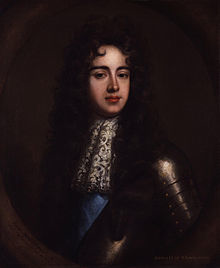 Netherlands, the eldest natural son of Charles II and Lucy Walter. Charles had two decades to legitimize his only living children. Charles did not. Monmouth was defeated at the Battle of Sedgemoor on 6 July 1685. According to the tour guide at the Tower of London, May 2003, after the execution of Monmouth, someone remembered that Monmouth had not sat for a portrait according to the custom of Stewart royalty. So Monmouth’s head was sewn back on the corpse, and dressed up for a painting. Duke of Monmouth by Willem Wissing.
Netherlands, the eldest natural son of Charles II and Lucy Walter. Charles had two decades to legitimize his only living children. Charles did not. Monmouth was defeated at the Battle of Sedgemoor on 6 July 1685. According to the tour guide at the Tower of London, May 2003, after the execution of Monmouth, someone remembered that Monmouth had not sat for a portrait according to the custom of Stewart royalty. So Monmouth’s head was sewn back on the corpse, and dressed up for a painting. Duke of Monmouth by Willem Wissing.
1761 Battle of Vellinghausen. Seven Years War. Lippe River Germany. British Regiments: 3rd Dragoon Guards; later the 3rd Carabineers and now the Royal Scots Dragoon Guards.
The Carabineers; later the 3rd Carabineers and now the Royal Scots Dragoon Guards. 2nd Dragoons, the Royal Scots Greys; now the Royal Scots Dragoon Guards; 2nd 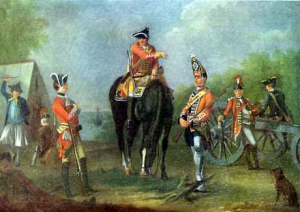 Battalion the Coldstream Guards.
2nd Battalion the Third Guards, now the Scots Guard; 25th Foot; now the King’s Own Scottish Borderers. 87th Highlanders; disbanded after the war.
88th Highlanders; disbanded after the war.
Battalion the Coldstream Guards.
2nd Battalion the Third Guards, now the Scots Guard; 25th Foot; now the King’s Own Scottish Borderers. 87th Highlanders; disbanded after the war.
88th Highlanders; disbanded after the war.
British Regiments – britishbattles.com/seven-years/vellinghausen.htm
1767 – Michael Bruce, died Scottish poet (b. 1746)
- Brus or Bruce 1050 2Stewart2Kennedy 2Montgomery2Blair 2Cochrane2Miller 2Simmons2Choate zoe ToaG
1779 Stoney Point New York. Fraser’s 71st Highlanders left their Geradiersto be stationed at Stony Point New York. In July 1779, the British captured the fortification at Stony Point. A 600-man garrison, including the 71st’s Grenadiers, was left to defend it but on the night of 15 July 1779, Brigadier General Anthony Wayne attacked and recaptured the fort. Wayne’s disciplined light infantry force advanced in two columns down the Stony Point peninsula. Between the two larger forces was a minor one to draw British attention. Sentries detected the Americans as they approached the fort, and the general engagement ensued, lasting only thirty minutes. With the entire British force taken prisoner, the operations of the 71st Regiment of Foot in the Northern Campaign came to an end. Wikipedia. Some of the prisoners stayed in the colonies.
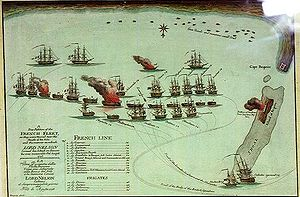 1798 French Napoleonic War. A True Position of the French Fleet as they were moored near the Mouth of the Nile and the manner in which Lord Nelson formed his attack on them, Robert Dodd, 1800, National Maritime Museum.
1798 French Napoleonic War. A True Position of the French Fleet as they were moored near the Mouth of the Nile and the manner in which Lord Nelson formed his attack on them, Robert Dodd, 1800, National Maritime Museum.
1799 – The Rosetta Stone is found in the Egyptian village of Rosetta by French Captain Pierre-François Bouchard during Napoleon’s Egyptian Campaign. 2 years later, 1801 The Battle of Algeciras. (13 June to 14 July 1801) Bay of Gibraltar, has Thomas Lord Cochrane and the Speedy tieing up the French fleet until the British could win. The French fleet loss, and inability to resupply the French army on the Nile, condemned the French army in Egypt to Surrender under the Capitulation of Alexandria August 30, 1801. The British admiral was Lord Keith (clan Keith) George Elphinstone, 1st Viscount Keith. Part of the French surrender was to turn over the Rosetta stone to the English.
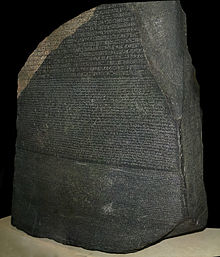 The Rosetta Stone in the British Museum. An ancient Egyptian granodiorite stele inscribed with a decree issued at Memphis in 196 B.C. on behalf of King Ptolemy V. The decree appears in three scripts: the upper text is Ancient Egyptian hieroglyphs, the middle portion Demotic script (ancient Egyptian), and the lowest Ancient Greek. Transported to London, it has been on public display at the British Museum since 1802. It is the most-visited object in the British Museum. John, Gretchen, and Sister Amy Choate visited it in May 2003, when Amy was released from her mission for The Church of Jesus Christ of Latter Day Saints (clans Cochrane and Keith)
The Rosetta Stone in the British Museum. An ancient Egyptian granodiorite stele inscribed with a decree issued at Memphis in 196 B.C. on behalf of King Ptolemy V. The decree appears in three scripts: the upper text is Ancient Egyptian hieroglyphs, the middle portion Demotic script (ancient Egyptian), and the lowest Ancient Greek. Transported to London, it has been on public display at the British Museum since 1802. It is the most-visited object in the British Museum. John, Gretchen, and Sister Amy Choate visited it in May 2003, when Amy was released from her mission for The Church of Jesus Christ of Latter Day Saints (clans Cochrane and Keith)
1909 William Gemmell Cochran, Scottish mathematician, was born in Rutherglen. Worked on statistics, agricultural experiments, forecasting the effects of weather on crop yields and sample survey design. During the Second World War he worked in America, examining probabilities of hits in naval warfare, and by 1945 he was working on bombing raid strategies. www.bbc.co.uk/scotland/history/onthisday/july/15
 B-1A Bomber aircraft. 1960 Christopher Douglas “Chris” Stewart (born July 15, 1960) (Stewart clan) is an American author, businessman, and politician known for his bestsellers Seven Miracles That Saved America and The Miracle of Freedom: Seven Tipping Points That Saved the World. He currently (2015) represents Utah’s 2nd congressional district in the United States House of Representatives, and served as a Mormon missionary in Texas. In 1995, Stewart was awarded the Mackay Trophy for “significant aerial achievement” for the combat capability operation known as Coronet Bat. On June 3, 1995, Chris and a flight of two B-1s set the world record for the fastest non-stop flight around the world. Stewart was the senior project officer for this mission. The purpose of the mission was to demonstrate the capability of the B-1 Lancer with live bombing activity over three bombing ranges on three continents in two hemispheres.[6]
B-1A Bomber aircraft. 1960 Christopher Douglas “Chris” Stewart (born July 15, 1960) (Stewart clan) is an American author, businessman, and politician known for his bestsellers Seven Miracles That Saved America and The Miracle of Freedom: Seven Tipping Points That Saved the World. He currently (2015) represents Utah’s 2nd congressional district in the United States House of Representatives, and served as a Mormon missionary in Texas. In 1995, Stewart was awarded the Mackay Trophy for “significant aerial achievement” for the combat capability operation known as Coronet Bat. On June 3, 1995, Chris and a flight of two B-1s set the world record for the fastest non-stop flight around the world. Stewart was the senior project officer for this mission. The purpose of the mission was to demonstrate the capability of the B-1 Lancer with live bombing activity over three bombing ranges on three continents in two hemispheres.[6]  In the process, the team set three world records, flying 36,797.65 kilometers in 36 hours 13 minutes.[7] The mission was recounted in the film Supersonic Saints: Thrilling Stories from LDS Pilots.[8]
In the process, the team set three world records, flying 36,797.65 kilometers in 36 hours 13 minutes.[7] The mission was recounted in the film Supersonic Saints: Thrilling Stories from LDS Pilots.[8]
1975 ~ Apollo – Soyuz Commemorative Issue of 1975 ~ space stamp.
2006 Jason Wesley Choate married Calista at Oklah. Jason is many great grand son of King John and Barons William Albani, Hugh Bigod, Henry de Bohun, Gilbert de Clare, John Lacie, William Malet, William Mowbray, Saire de Quincey, Robert Ross, Robert de Vere, sureties.
Disclaimer: The author of each article published on this web site owns his or her own words. The opinions, beliefs and viewpoints expressed by the various authors and forum participants on this site do not necessarily reflect the opinions, beliefs and viewpoints of Utah Standard News or official policies of the USN and may actually reflect positions that USN actively opposes. No claim in public domain or fair use. © John Choate
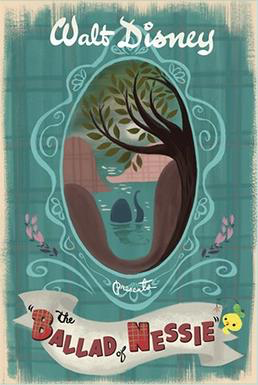
2011 The B allad of Nessie film released. Nessie lives in a Loch with MacQuack, a rubber duckie, when a rich golf course developer bulldozes the lack into a miniature golf course.
Narrator: Walt Disney short.
In the bonny blue highlands, where the bagpipes play, lives a creature called Nessie, but it wasn’t always this way.
Before her great loch had ever been seen, shy Nessie lived life on the moors of Glenkeane.
She was rumored a monster, which wasn’t quite right. For she was really a softie, with no bark, and no bite.
And with a wee friend that she had, the kind loyal and true, they played hide and seek in a pond just for two.
Until one gloomy, gray day, at a quarter past two, from some distant, dark land, came a tartan-clad crew.
With no time to waste, and a toot and a bugle, no expenses were spared, for tycoon MacFroogle!
Utah Standard News depends on the support of readers like you.
Good Journalism requires time, expertise, passion and money. We know you appreciate the coverage here. Please help us to continue as an alternative news website by becoming a subscriber or making a donation. To learn more about our subscription options or make a donation, click here.
To Advertise on UtahStandardNews.com, please contact us at: ed@utahstandardnews.com.


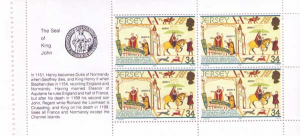
Comments - No Responses to “July 15th Scots Book of Days”
Sure is empty down here...